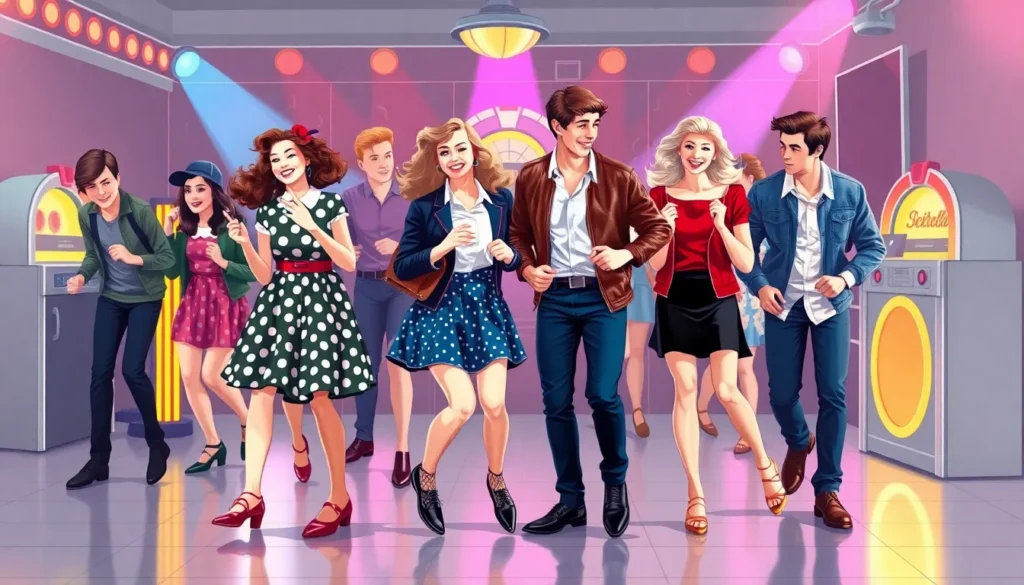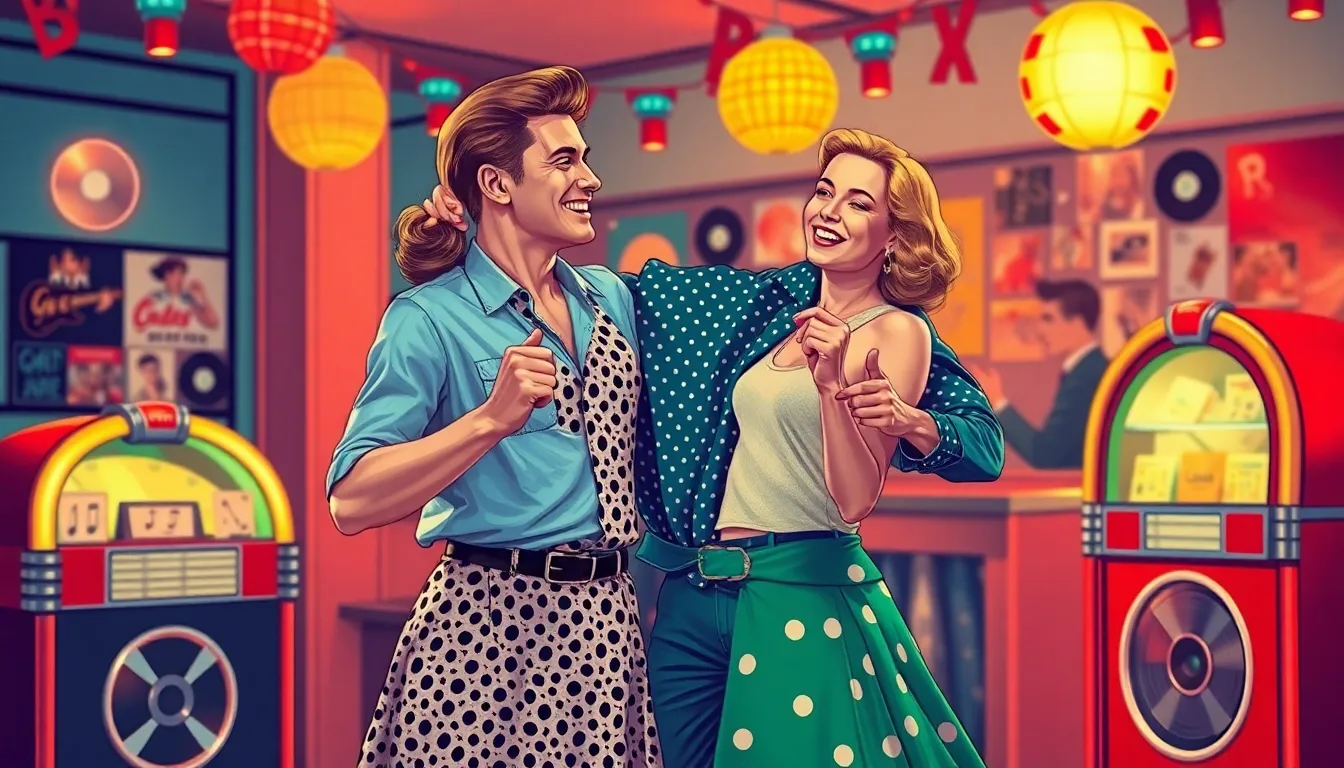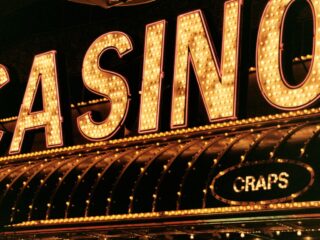
The 1950s was a decade like no other, bursting with vibrant trends that shaped modern culture. Picture a world where rock ‘n’ roll reigned supreme, poodle skirts twirled at every sock hop, and television became the new family member everyone fought over. It was a time when Elvis shook his hips and everyone wondered if they should really be doing the same.
From the rise of iconic films to the birth of the teen idol phenomenon, the ’50s set the stage for everything that followed. So grab your bobby socks and saddle shoes as we dive into this nostalgic era filled with catchy jingles, unforgettable fashion, and a sprinkle of rebellion. Discover how this remarkable decade still influences pop culture today, proving that while styles may change, the spirit of the ’50s lives on.
1950s Popular Culture
The 1950s marked a transformative era in American popular culture, characterized by distinctive trends and innovations. Rock ‘n’ roll became a defining musical genre, with artists like Elvis Presley and Chuck Berry capturing the hearts of youth. Icons emerged, shaping identities and trends that resonated across generations.
Fashion experienced a unique shift in the 1950s. Classic pieces like poodle skirts, leather jackets, and saddle shoes dominated wardrobes, representing youthful rebellion and expression. Television took center stage as families gathered around to enjoy popular shows like “I Love Lucy” and “The Ed Sullivan Show,” forever changing entertainment’s landscape.
Hollywood produced iconic films that reflected societal norms and aspirations. Movies such as “Rebel Without a Cause” and “West Side Story” resonated with themes of youth and social issues. The teen idol phenomenon emerged during this time, with figures like James Dean and Sandra Dee capturing the fascination of young audiences.
Advertising also found a new voice in the 1950s. Brands began to target teenagers, recognizing their influence and purchasing power. Products like Coca-Cola and Pontiac became symbols of youth culture, promoting freedom and excitement.
Cultural trends in the 1950s extended to literature and art. Beat Generation writers like Jack Kerouac and Allen Ginsberg challenged conventional norms, while pop art began taking root, with figures like Andy Warhol gaining popularity.
Each aspect of 1950s popular culture contributed significantly to shaping modern society, creating lasting impressions that still resonate today. Vibrancy defined this period, laying the foundation for subsequent cultural developments.
Music Trends in the 1950s

The 1950s marked a transformative era in music, with rock ‘n’ roll emerging and reshaping the cultural landscape. This genre resonated deeply with the youth of the time and set the stage for future musical innovations.
Rise of Rock and Roll
Rock ‘n’ roll gained prominence in the mid-1950s, breaking away from traditional music styles. The genre combined elements of rhythm and blues with country, appealing to a diverse audience. With catchy melodies and upbeat tempos, it captured the spirit of youth rebellion. The signature sound of electric guitars and strong backbeats led to a cultural shift. Dances like the Twist became wildly popular, further fueling rock ‘n’ roll’s appeal. Parents often disapproved, viewing the music as provocative. Nevertheless, this genre established new norms and paved the way for future musical movements.
Influential Artists of the Era
Several artists defined the 1950s music scene and left lasting legacies. Elvis Presley, known as the King of Rock ‘n’ Roll, brought charisma and a unique sound that captivated audiences. Chuck Berry popularized spirited guitar riffs and clever lyrics, blending rock with storytelling. Little Richard energized the charts with his flamboyant style and powerful vocals. Buddy Holly introduced innovative songwriting techniques, influencing countless musicians. These artists not only shaped rock ‘n’ roll’s landscape but also inspired future generations. Their music reflected the excitement and turmoil of the era, connecting deeply with fans.
Television and Film in the 1950s
Television and film captured the essence of the 1950s, reflecting the decade’s cultural values and norms. The growth of television transformed family interactions and entertainment.
Iconic TV Shows
“I Love Lucy” remains one of the most beloved sitcoms, showcasing Lucille Ball’s comedic brilliance. This program, which aired from 1951 to 1957, popularized the multi-camera format and introduced the concept of the first pregnant character on television. Other notable shows included “The Ed Sullivan Show,” where famous acts like Elvis Presley debuted, and “Leave it to Beaver,” which represented traditional family values. These series shaped societal views and provided a glimpse into American life, influencing future television programming.
Major Motion Pictures
In cinema, films such as “Rebel Without a Cause” explored teenage angst and societal conflicts. Starring James Dean, this movie resonated with youth, embodying the struggles of a generation. “Ben-Hur,” released in 1959, showcased epic storytelling and technological advancements in filmmaking. It achieved acclaim, winning a record eleven Academy Awards. The romantic musical “Singin’ in the Rain” remains celebrated for its charm and performances, illustrating the era’s cinematic flair. Each film contributed to a rich tapestry of cultural expression in the 1950s.
Fashion and Youth Culture
Fashion in the 1950s reflected a vibrant youth culture characterized by rebellion and freedom. Trends influenced style choices, resonating with the desires of a generation eager to break from traditional norms.
Trends Influencing Style
Fashion choices were heavily influenced by rock ‘n’ roll music, leading to casual yet stylish clothing like jeans and leather jackets. Additionally, movies played a significant role in shaping trends, with icons like James Dean and Marlon Brando setting fashion standards for young men. Young women found inspiration in the feminine silhouette, often wearing full skirts and fitted bodices. Colorful patterns and bold accessories represented the growing individuality among teens. Designers like Christian Dior introduced looks that emphasized youth while challenging conventions, ensuring that fashion became a form of self-expression during this dynamic era.
The Birth of Teen Fashion
The 1950s marked the emergence of dedicated teen fashion, reflecting a divergence from adult styles. Brands began targeting the youth market, creating clothes specifically designed for teenagers. Items like poodle skirts and saddle shoes became symbols of youthful rebellion. Teen magazines showcased stars who embodied this new fashion sense, making them role models for the youth. Unique styles emerged, allowing teenagers to assert their identities and reject the conformity of previous generations. The expansion of shopping options for youth also contributed to this fashion evolution, solidifying the role of teenagers as influential consumers in the fashion industry.
Literature and Beat Generation
The 1950s witnessed the rise of unique literary movements, prominently featuring the Beat Generation. This group of writers and poets challenged conventional norms through their works, capturing the spirit of nonconformity.
Key Authors and Works
Jack Kerouac’s “On the Road” became a cornerstone of Beat literature, portraying the quest for meaning. Allen Ginsberg’s poem “Howl” confronted societal issues, gaining notoriety for its candidness. William S. Burroughs pushed boundaries with “Naked Lunch,” utilizing experimental forms and techniques. Each of these authors, through their themes of rebellion and exploration, left a profound mark on literature during the decade.
Impact on Society
The Beat Generation profoundly influenced society in the 1950s. They questioned societal norms concerning sexuality, religion, and consumerism, sparking conversations about freedom of expression. Their emphasis on spontaneity and individualism resonated with the youth, leading to cultural shifts that extended beyond literature. The Beats inspired future countercultures, paving the way for movements in the 1960s and beyond.
Conclusion
The 1950s stand as a pivotal decade in shaping modern popular culture. Its blend of music fashion and television created a vibrant landscape that resonated with youth and transformed societal norms. The rise of rock ‘n’ roll and iconic figures like Elvis Presley and Chuck Berry not only defined a musical genre but also sparked a cultural revolution.
Television shows and films captured the essence of the era while reflecting the values and aspirations of a generation. The emergence of dedicated teen fashion marked a shift in consumer culture allowing young people to express their identities.
As the Beat Generation challenged conventional norms through literature the decade laid the groundwork for future movements. The cultural legacy of the 1950s continues to influence contemporary society reminding us of a time when creativity and rebellion flourished.










